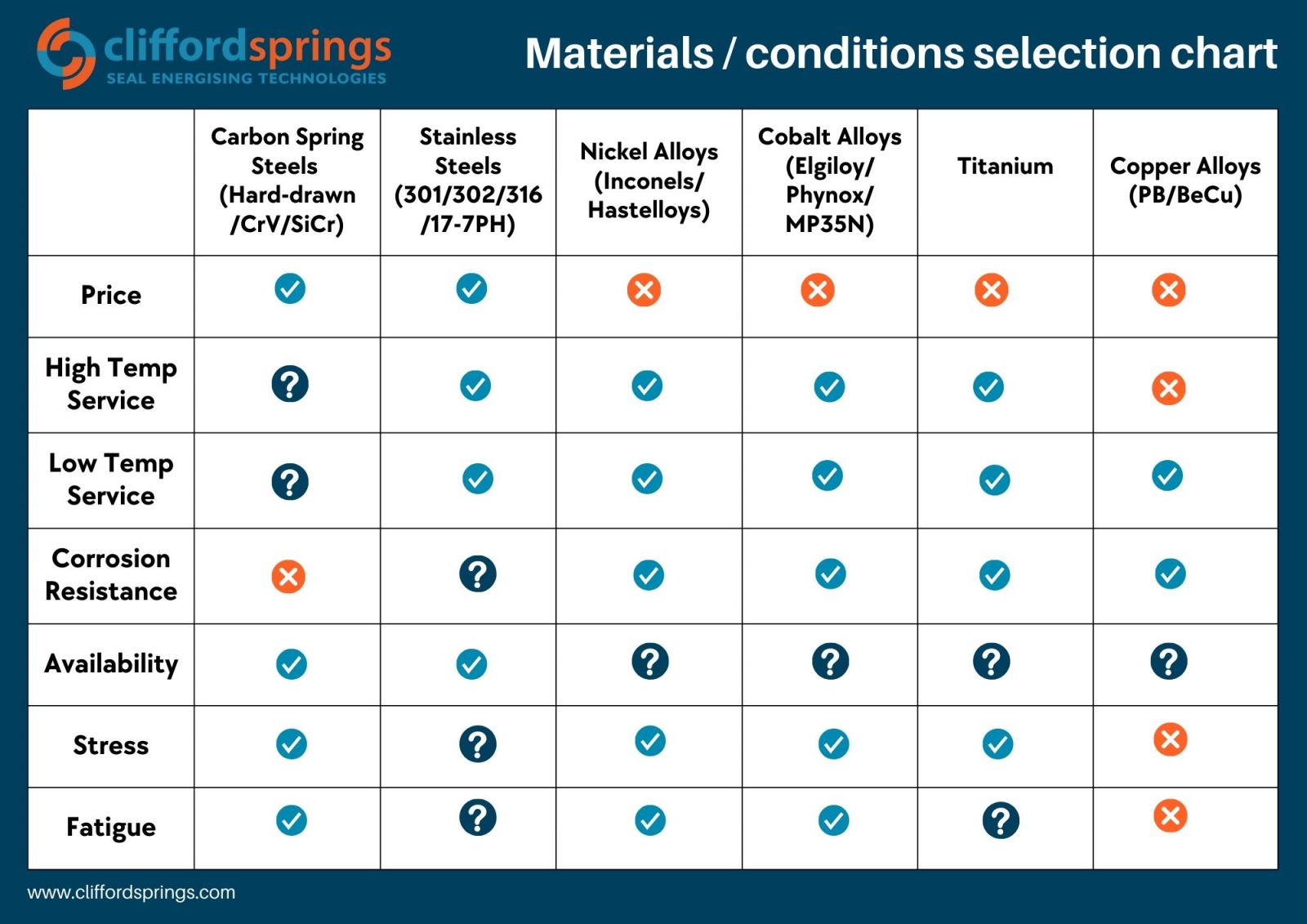Who wants to live forever?

Chart to help engineers select suitable materials based on a number of conditions
The longer our tools, vehicles and equipment can perform effectively, the better. And that goes for springs, the most highly stressed component in any assembly, too.
So, what factors need to be considered to ensure this longevity of the springs?
Temperature
High temperatures accelerate relaxation rates – even more significant when combined with high stress. However, low temperature can cause brittleness and failure risks from shock / impact loading.
It’s important to choose a material that will give predictable performance at the extremes of temperature to which the spring will be exposed – elevated and cryogenic temperatures.
Corrosion
Steel has particularly poor corrosion resistance and the common protection methods work by shielding/sealing the surface from the atmosphere (barrier protection). However, wear or damage to the coating can then allow corrosion to form. Some high-performance coatings for steel springs can achieve in excess of 2000 hours salt spray performance, but ultimately once the coating is breached, the base material will corrode and lead to spring failure.
The solution? Select a raw material which has been developed for specific atmospheres/conditions. For example, certain Stainless Steels do have excellent corrosion resistance in many outdoor environments. And a range of super alloys (“exotic” alloys) have been developed to resist elevated and cryogenic temperatures, Hydrogen Sulphide atmospheres and other particularly hostile conditions.
Relaxation
During operation and when held under load/stress, all springs will relax over time. Whilst usually at a predictable rate, relaxation can be accelerated/affected by temperature, stress and vibration.
Raw material choice and additional manufacturing processes, such as hot setting and hot prestressing (also known as “scragging” or “closing”) can help to reduce relaxation rates.
Fatigue
Repeated operation can cause spring failure. Fatigue life can be extended via careful spring design, surface treatment, such as “shotpeening” and reducing the stress change in service as a percentage of the maximum theoretical stress limit.
UK Based Clifford Springs produce thousands of metres of many types and sizes of springs for world-wide clients. Our technical experts work closely with our clients’ engineers and designers, and we are happy to advise on the best choices to meet key objectives. A material selected for a spring that requires extreme fatigue performance may not have – for example – particularly good corrosion resistance, and therefore additional treatments/processes may be required to enhance the corrosion resistance. Low temperature service may dictate materials which are not as efficient at absorbing stress, so a physically larger spring may be required, or a higher performance “exotic” alloy.
Need more help? Get in touch with our Technical Sales Manager, Graham Fowler, to find out more:
Tel: +44 (0) 1527 62876
Email: graham.fowler@cliffordsprings.co.uk
Website: www.cliffordsprings.com

| Telephone: | 01527 62876 |
| Email: | sales@cliffordsprings.co.uk |
| Website: | https://www.cliffordsprings.com/ |
| More information on the Clifford Springs Ltd BVAA Member Directory Page |
Search related valve / actuator articles: Clifford Springs LtdIssue 88Springs












